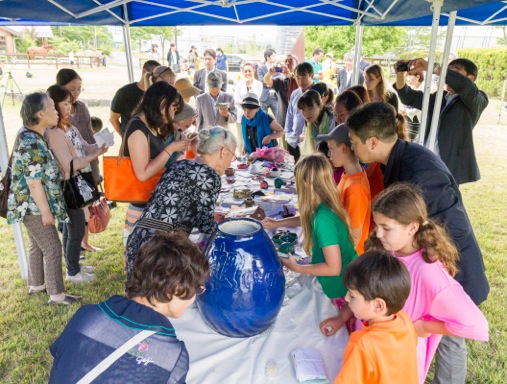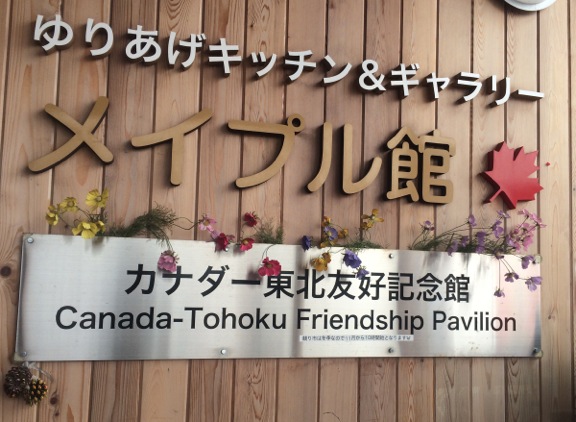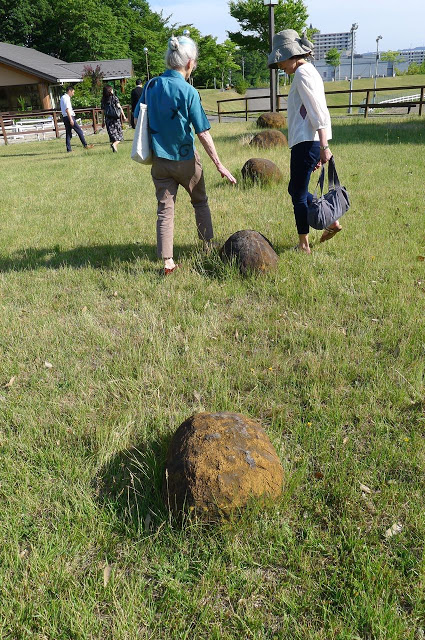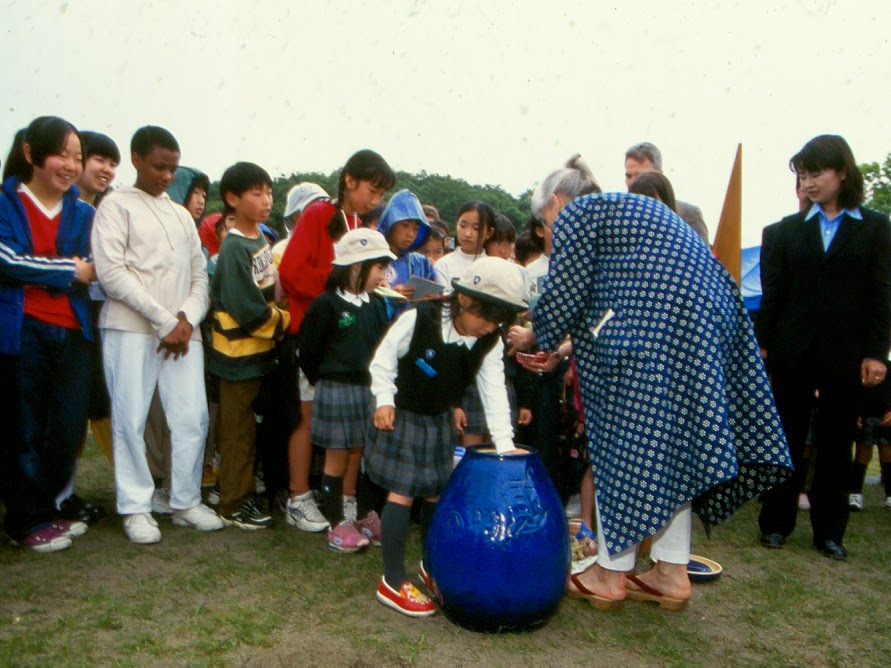Japan
Time capsule event in Izumi Town, Sendai, Japan
Mitsubishi engineers seal the concrete vault holding the blue ceramic vessel with the “Blessings” inside.
Kate’s arrival in Japan
The homestay family: Chizuko and Kichi, and their daughter, Maiko, with Kate and me.
Kate, known to me as Grandma Kate, arrived in Sendai, Japan on Tuesday and was greeted at the airport by a rare rain, her homestay family from 17 years ago and myself. After slurping through mountains of cold soba (buckwheat noodles) we returned to home base, where we recharged. Jetlagged brain + inundation of the Japanese language = rest required.
Kate and Chizuko admiring the rocks that lead to the sundial.
Angela Robins lives in Minneapolis, Minnesota, and you can learn about her work building a traditional boat in Japan at: http://angelarobins.com/blog
Sendai, Japan
Dedication of Himeguri in 1998




























